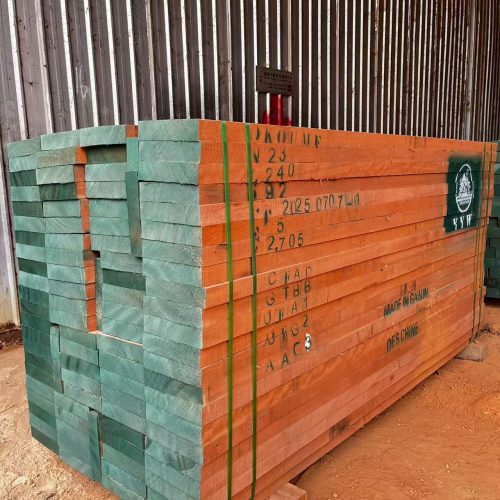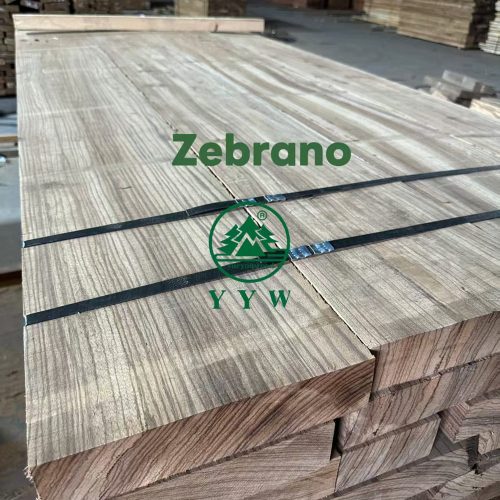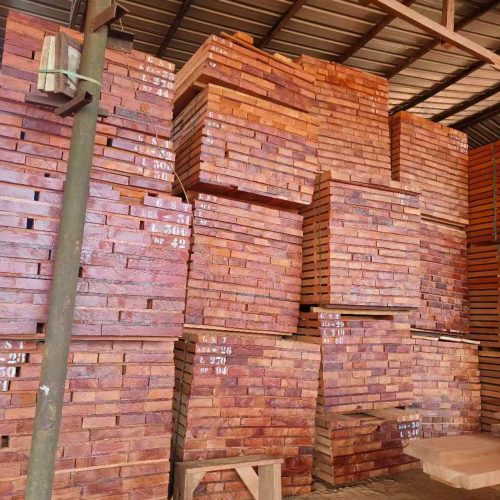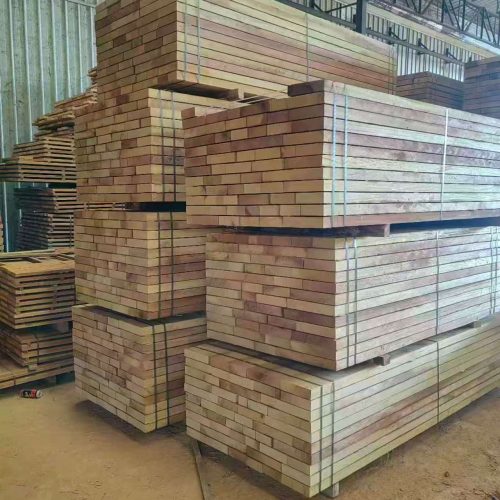Dibetou Wood Key Features:
Tree Size: Typically grows up to 100-150 feet (30-46 meters) tall, with a trunk diameter of 2-4 feet (0.6-1.2 meters).
Janka Hardness: 940 lbf (4,180 N), suitable for a range of woodworking applications.
Average Dried Weight: 540 kg/m³ (34 lbs/ft³), making it moderately heavy yet manageable for construction purposes.
Specific Gravity: .45 (basic), .54 (at 12% moisture content).
Dibetou (Bibolo) wood Appearance:
Heartwood: Golden yellow to reddish-brown, sometimes exhibiting darker streaks. The color darkens over time and exposure.
Sapwood: Narrow, typically light gray to medium yellow. The sapwood is often clearly demarcated from the heartwood.
Figuring: Quarter-sawn surfaces tend to display a ribbon-stripe figuring, similar to Sapele.
African Walnut Wood Workability:
Grain: Usually slightly interlocked, but may be straight at times.
Texture: Medium, uniform texture, with a high natural luster.
Rot Resistance: Moderately durable, resistant to powder post beetles, but susceptible to termites.
Ease of Use: Easy to work with both hand and machine tools. Care should be taken to avoid tearout when working with interlocked grain.
Odor: Has a cedar-like scent.
African Walnut Timber Uses:
Common Applications: Furniture, cabinetry, flooring, veneer, plywood, and turned objects.
Finishing: Takes well to finishes and gluing, making it ideal for intricate woodworking projects.
African Walnut Wood Sustainability:
IUCN Status: Not listed as endangered, and is considered a species of least concern.
CITES: Not listed in the CITES appendices, so it does not face the same restrictions as some other African hardwoods.

1-600x800.jpg)
2-600x800.jpg)
3-600x279.jpg)
1-100x100.jpg)
2-100x100.jpg)
3-100x100.jpg)



